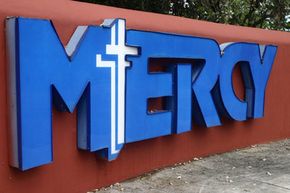How much do you really know about your credit score and how it's calculated? Find out in our Credit Score Quiz.
Many factors come into play when you apply for a line of credit. As you probably know, your creditworthiness is expressed by your credit score, a number based on the size of your debt and how timely your debt payments have been in the past. The higher the score, the more likely a financial institution will extend you a line of credit.
When you apply for a line of credit, a lender also looks at your ability to repay and your credit history. It evaluates how much money you make, how secure and sustainable your job and lifestyle are and how you've paid your past debts. For business lines of credit, a financial institution evaluates profitability and business risk. It scrutinizes your business's profit/loss history, as well as any risks like a large investment in a new technology that could impact your ability to pay back the loan.
The HELOC serves as a good example of how your credit limit is determined. With a HELOC, the limit of your line of credit is based on a calculation involving the market value of your house. The financial institution determines your limit by subtracting what you owe on your mortgage from a percentage (usually 75 to 80 percent) of the market value of your house. Let's say an appraiser values your house at $500,000. You still owe $200,000 on your mortgage. A given bank offers you an 80-percent line of credit. Here's the calculation for your line of credit limit:
$500,000 x 80% = $400,000
You still owe $200,000, so
$400,000 - $200,000 = $200,000 credit limit
The financial institution may decrease this limit based on your credit history and ability to repay.
For a business line of credit, the financial institution determines your credit limit based on the value of the business assets you use to secure the line of credit. Your office building, or other business real estate, is the most likely candidate.
A financial institution determines the interest rate on your line of credit by adding an indexed percentage rate -- such as the prime rate or the lowest interest rate you could possibly get from the bank -- to a margin. This margin is affected by your credit history, ability to repay, profitability and business risk, as well as the bank's ability and willingness to take financial risks. Your variable interest rate will increase and decrease as the chosen index increases and decreases.
Again, a line of credit is useful for people or businesses that face several large costs over several years, but there are alternatives to lines of credit. A home equity loan may finance a single large project, such as finishing the attic so that the in-laws can move in. The high interest rates of credit cards tend to be dangerous for large purchases that can't be repaid quickly. But if you need to make a series of small purchases and can pay back the money fairly quickly, a credit card might be a better choice than a line of credit.
If you'd like to know more about lines of credit and related topics, you can follow the links on the next page.


